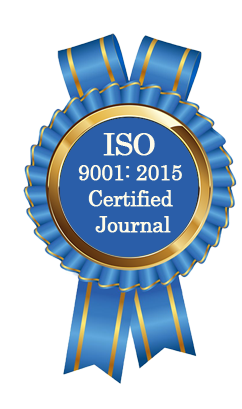| All | Since 2020 | |
| Citation | 105 | 60 |
| h-index | 4 | 4 |
| i10-index | 3 | 2 |
WJAHR Citation 
Login
News & Updation
Best Article Awards
World Journal of Advance Healthcare Research (WJAHR) is giving Best Article Award in every Issue for Best Article and Issue Certificate of Appreciation to the Authors to promote research activity of scholar.
Best Article of current issue
Download Article : Click here
Indexing
Abstract
THE CLINICAL OUTCOME OF ELASTIC STABLE INTRAMEDULLARY NAILS FOR BOTH BONE DIAPHYSEAL FOREARM FRACTURES IN CHILDREN 5 – 15 YEARS OLD
Dr. Rabah Abdulla AL- Ebadi F.I.C.M.S (Ortho)*, Dr. Mohammed Nidhal Ahmed M.B.Ch.B. and Dr. Ammar M. Sheet Rashid C.A.B.S.
ABSTRACT
Background: Diaphyseal forearm fractures in skeletally immature patients is common fractures, estimated around 40% of all pediatric fractures. Using of elastic nails has changed the management of displaced forearm fracture. Objectives: the aim of the study is to evaluate the clinical outcome of elastic stable intramedullary nails in treating both bones diaphyseal forearm fractures in children 5 to 15 years old. Patients and Method: A prospective case series study carried out in orthopedic unit in Al-Mosul teaching hospital from January 2021 to June 2022, with average follow up of 6 months. Forty-one patients were included in the study depending on the inclusion and exclusion criteria. Elastic-stable intramedullary nailing technique done to all patients under general anesthesia. Functional outcomes of these patients assessed by price et al criteria. Results: In the study sample 27 (66.4%) are males, 14 (33.6%) are females. Mean age of patients is 10.67 years ranges from 5 -15 years. Right forearm injured in 16 (39.03%) patients, while left forearm fractures occurred in 25 (60.97%) patients. Thirty-seven (90.24%) patients with closed fractures, while only four (9.75%) patients has type 1 or 2 open fractures. Closed reduction technique done in 33 (80.5%) patients, mini – incision / forceps or other reduction tools assisted technique done in six (14.63%) patients. Open reduction techniques performed for two (4.87%) patients. Entry site skin irritation is occurred in 2 (4.87%) patients, superficial infection is noted in 2 (4.87%) patients, paresthesia (superficial radial nerve irritation) is noted in 1 (2.43%) patients, migration of the nail tip is recorded in 1 (2.43 %) patients, olecranon bursitis occurred in 1(2.43%) patient . Average union time was 9.2 weeks; shorter union time recorded in association with younger age. Based on Price et al., criteria functional outcomes were calculated which showed excellent results in 37 (90.3%) patients, good in 3 (7.3%) patients, fair in one (2.4%) patient. Conclusion: Intramedullary fixation by Elastic intramedullary nails is successful treatment option because it is simple, safe and minimally invasive procedure. It provides many biological and mechanical advantages having low and manageable complications, and excellent clinical outcomes.
[Full Text Article] [Download Certificate]
